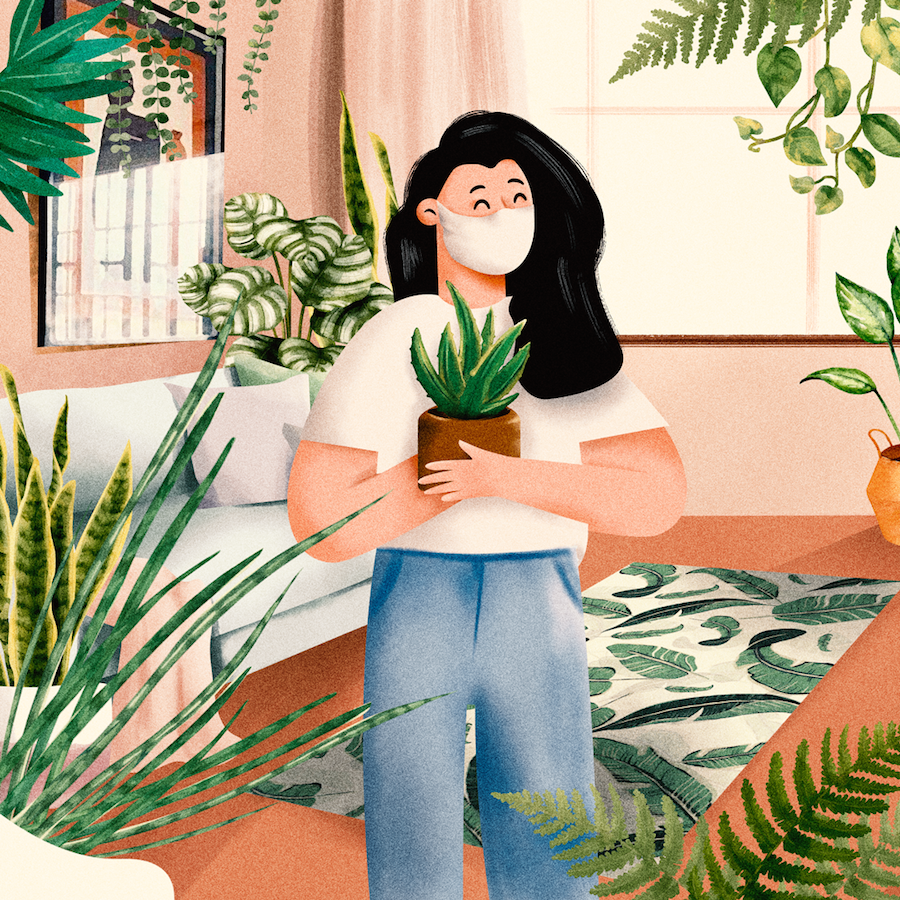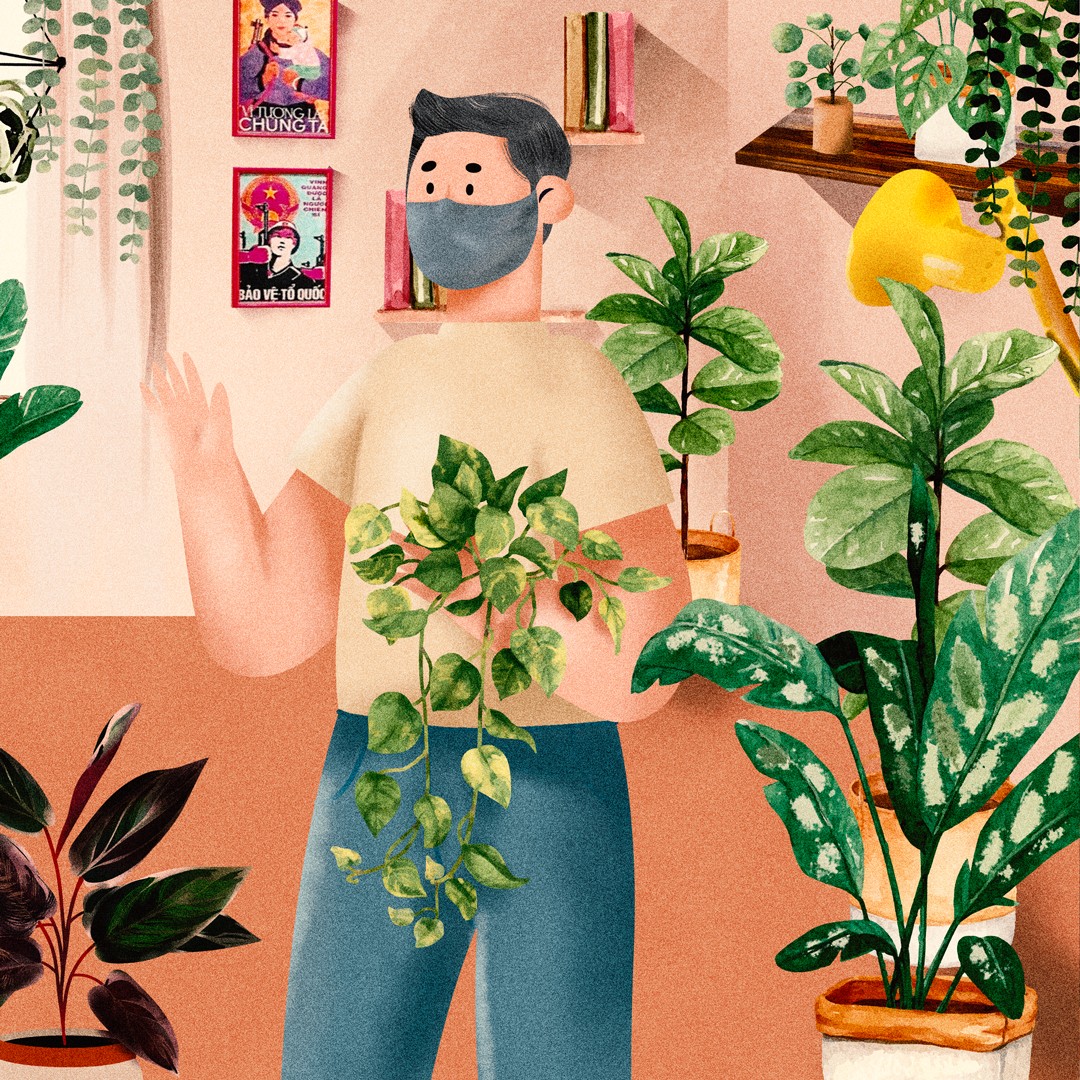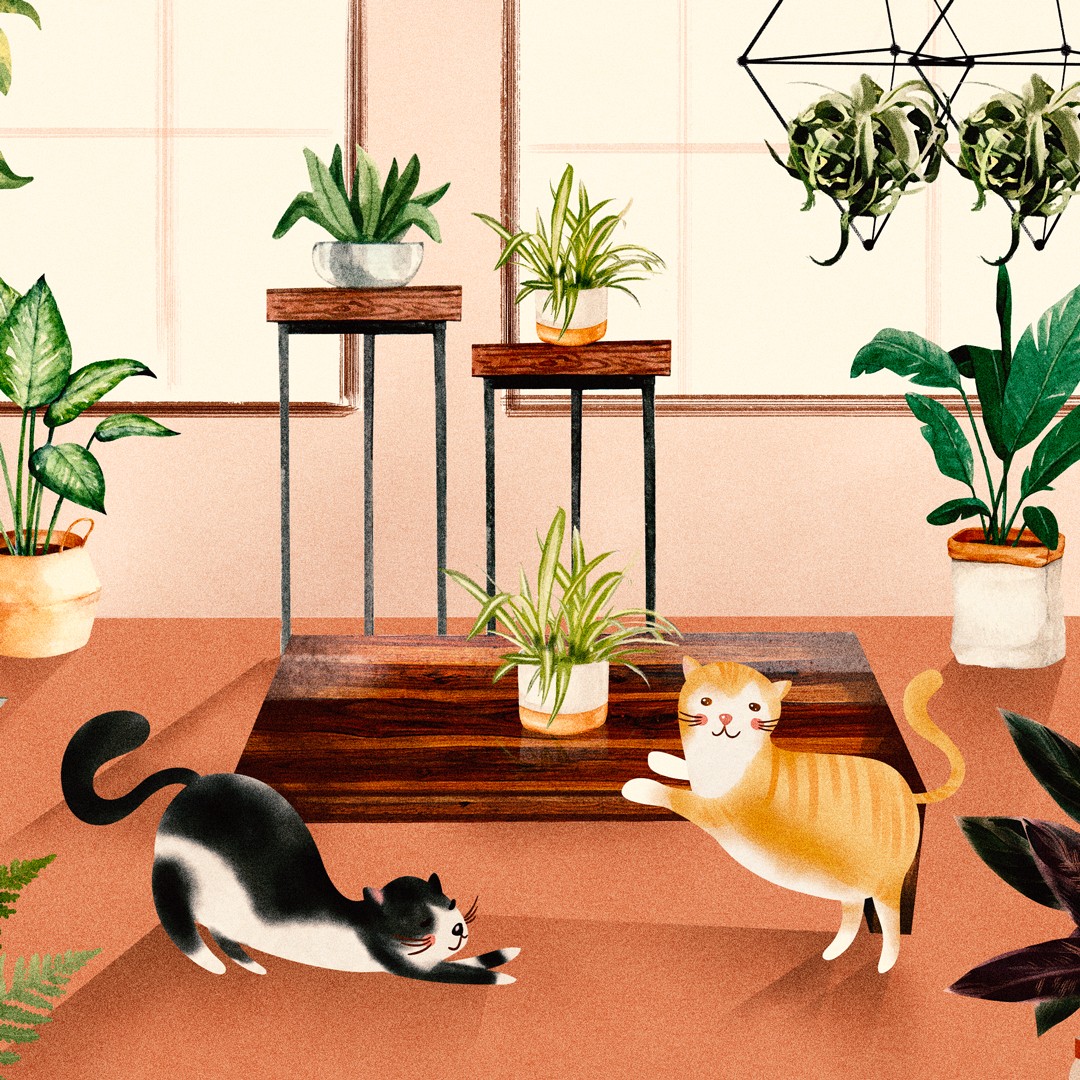House quarantine quickly escalated passing fancies. Self-care being the prescribed way to protect others, we baked, cut hair, painted, knitted, and worked from home. Suddenly, confronted by the degree of livability within our walls, we shopped online to outfit ourselves for a long-drawn-out war.
This uncertain time, we let go of big-ticket items but allow ourselves small luxuries for hits of happiness. Among the search trends that spiked was “indoor plants.” We wanted to know their names — which ones made us breathe better, brought luck, boosted immunity, were best for the bedroom, were not toxic to pets, and could be delivered to us.
We did not have to know the phrase “biophilic design” to understand that plants in our line of sight satisfy a hardwired need to feel connected to the natural world, especially when the severance is unceremonious and indefinite.
For cushioning that landing, I am in an online support group named Plantzilla. Yes, a support group. Because anything that brings joy comes with despair lurking in the wings. Trying to fathom the mysterious ways of plants is universally stressful no matter the level of Plantzilla. To every sign of wilting and discoloration, the all too common and confused refrain: “Overwatering or underwatering?”

There is no one way to be a Plantzilla. In my support group of four, there is a trader of rarities in the houseplant underworld, a botanic garden volunteer paid in seeds, an urban food grower. Me? I’m the one yelling at the air to keep the tornado kittens from bolting through leaves, nibbling stems and digging up soil.
But we recognize our compulsions in each other as we talked about watering as meditative, the clutching of heart when Peace Lilies do their dramatic droop to signal for attention, the meet-ups for cuttings like yesteryear’s Tupperware party.
Along the way, present as we are in a chatbox lit up by the animated three dots of someone typing, the discussion on up-potting, pruning or propagation trails off then meanders into job loss, grief, government, youth-voter registration, being a caretaker — and the read-receipt “seen” sure feels apt.
“ Mealybugs on the areca palm? Spider mites on the calatheas? Horrors! Click, shop, deliver for neem oil; spray and wipe every leaf. This we can control. ”
Cities and countries apart we may be, as flights got grounded and roads blocked, we laughed over the kind of sameness that bridges the distance. Our respective mad circling indoors, arms around a potted plant, looking for the right sunspot in yet another week of trial-and-error. Our scouring of online plant stores for that one beauty that we later learn grew wild and free in our mothers’ gardens. Our wonder at the way greenery in public places, exposed to harsh elements, blossom while the ones we baby at home with stories and songs teeter to the brink.
Hitting Plantzilla level then is not about ultimate know-how or number of house plants per square foot you own. It’s that moment where we admit to plant-modified behavior that arguably borders on ridiculous but feels reasonable to us. For me, it was finding myself precariously balanced on a stool because I could not wait one more second for my husband to replace a still good bulb in a hallway lined with plants that I was convinced needed a tad brighter artificial light.
As the world grapples with an unseen enemy and continues to lay bare our vulnerabilities, we retreat where we can go through the exercise of diagnosing and troubleshooting. Mealybugs on the areca palm? Spider mites on the calatheas? Horrors! Click, shop, deliver for neem oil; spray and wipe every leaf. This we can control.
But not always. We have an ICU in the laundry area for plants that want a break from my fussing. Some that I have once given up on are now on their second lease on life, making me marvel about the many things that simply need dormancy, and do well enough eventually without our well-meaning interventions. We are not always the help that’s needed and that’s okay.
When plants don’t die on us, they hold pocket memories. When seeds from kitchen scraps punched into potted soil decide to sprout, a guessing game ensues. This takes me back to my parents’ garden, off-limits now, for how they harvest from their lemon plants, that grew from seed, that came from a fruit they enjoyed — and on and on the cycle goes, befitting the natural order of things.
Plants and Mama also call to mind that time she visited and promptly moved out the Dumb Cane, declaring it as toxic. I moved it right back, apologizing to both for any hurt feelings.

My husband did the same spots swapping the morning the Sensation plant went missing. His judgement call on light quality was later validated with new growth. He pays attention, I thought. A plant reframed him for me.
Coming back from a grocery run, he would often hand over cuttings from overgrown pothos, rescued from getting trampled on. Heaps better than the flowers he doesn’t give.

I especially have a soft spot for an aloe vera I got as a pup from Mama because it thrives, despite me and the cats, and is now a mother plant with pups of her own.
My friends have grown in their plant parenting, too, and even made the switch from online buyer to seller, successfully letting go of their bundles of joy from prayer plants to pileas. Their composting journey for plant nutrients is also underway. Me? I’m a recipient of my husband’s The Seventh Seal meme, the one that goes: “Who are you?” “I am Death.” “Are you here for me?” “No. For your indoor plants.”
No matter, finicky collector or everyday plant momma, we’re all trying to make it through. And in the process, we’re curating both our “cultivating toolkit” so to speak and our community — one that cheers us upwards the way the band Pink Martini does with their song (that plants, cats and people like) Hang On Little Tomato. Hang on to the vine.
Art by Nicole Soltes
Edited by Tanya T. Lara


